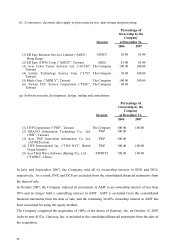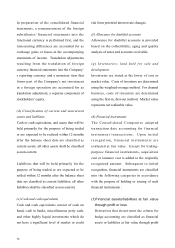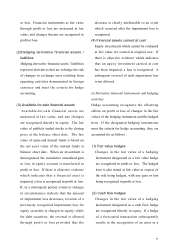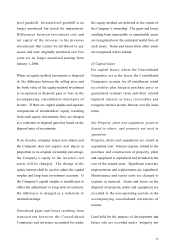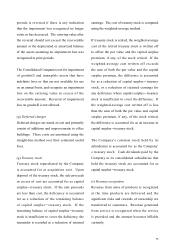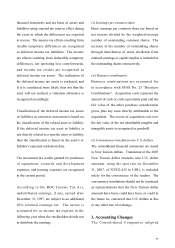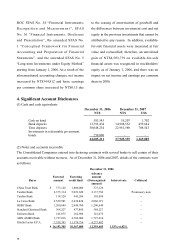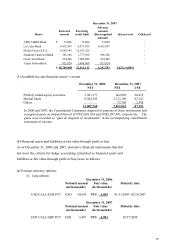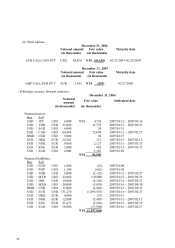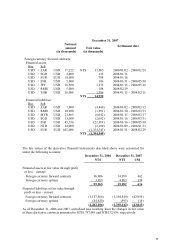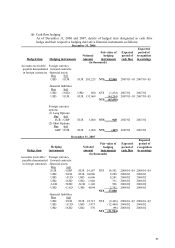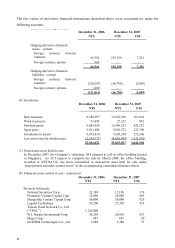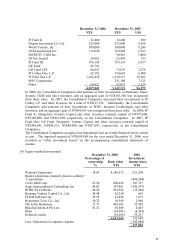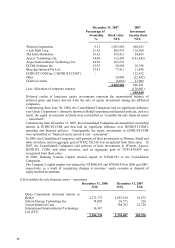Acer 2007 Annual Report Download - page 80
Download and view the complete annual report
Please find page 80 of the 2007 Acer annual report below. You can navigate through the pages in the report by either clicking on the pages listed below, or by using the keyword search tool below to find specific information within the annual report.77
nancial statements and tax basis of assets and
liabilities using enacted tax rates in effect during
the years in which the differences are expected
to reverse. The income tax effects resulting from
taxable temporary differences are recognized
as deferred income tax liabilities. The income
tax effects resulting from deductible temporary
differences, net operating loss carryforwards,
and income tax credits are recognized as
deferred income tax assets. The realization of
the deferred income tax assets is evaluated, and
if it is considered more likely than not that the
asset will not realized, a valuation allowance is
recognized accordingly.
Classication of the deferred income tax assets
or liabilities as current or noncurrent is based on
the classication of the related asset or liability.
If the deferred income tax asset or liability is
not directly related to a specic asset or liability,
then the classication is based on the asset’s or
liability’s expected realization date.
The investment tax credits granted for purchases
of equipment, research and development
expenses, and training expenses are recognized
in the current period.
According to the ROC Income Tax Act,
undistributed earnings, if any, earned after
December 31, 1997, are subject to an additional
10% retained earnings tax. The surtax is
accounted for as income tax expense in the
following year when the stockholders decide not
to distribute the earnings.
(v) Earnings per common share
Basic earnings per common share are based on
net income divided by the weighted-average
number of outstanding common shares. The
increase in the number of outstanding shares
through distribution of stock dividends from
retained earnings or capital surplus is included in
the outstanding shares retroactively.
(w) Business combination
Business combinations are accounted for
in accordance with SFAS No. 25 “Business
Combinations”. Acquisition costs represent the
amount of cash or cash equivalents paid and the
fair value of the other purchase consideration
given, plus any costs directly attributable to the
acquisition. The excess of acquisition cost over
the fair value of the net identiable tangible and
intangible assets is recognized as goodwill.
(x) Convenience translation into U.S. dollars
The consolidated nancial statements are stated
in New Taiwan dollars. Translation of the 2007
New Taiwan dollar amounts into U.S. dollar
amounts, using the spot rate on December
31, 2007, of NT$32.435 to US$1, is included
solely for the convenience of the readers. The
convenience translations should not be construed
as representations that the New Taiwan dollar
amounts have been, could have been, or could in
the future be, converted into U.S. dollars at this
or any other rate of exchange.
3. Accounting Changes
Th e Co nsoli da te d Com pa ni es a do pt ed



